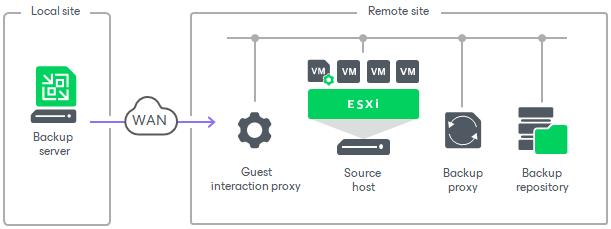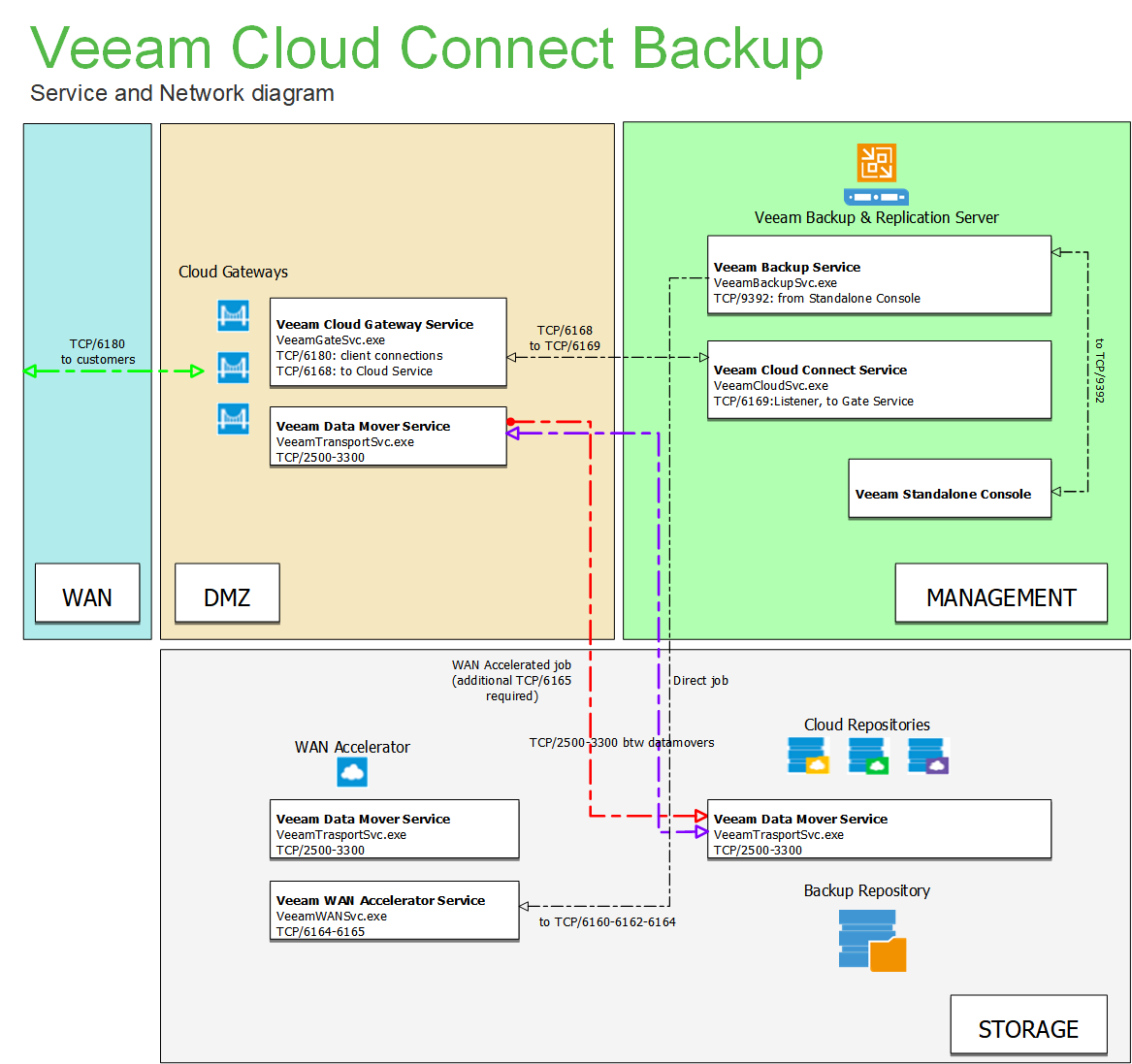

For more information on how to configure RPC dynamic port allocation to work with firewalls, see this Microsoft KB article. If you use firewall settings other than default ones or application-aware processing fails with the RPC function call failed error, you need to configure dynamic RPC ports.
Veeam backup ports windows#
Port used by the Microsoft SQL Server Browser service.ġ If you use default Microsoft Windows firewall settings, you do not need to configure dynamic RPC ports: during setup, Veeam Backup & Replication automatically creates a firewall rule for the runtime process. Ports used to communicate with Microsoft SQL servers hosting content databases.Įxact port numbers depend on the configuration of a Microsoft SQL server. Cause Linux OS firewall configuration and/or security rules restrict connections to the required ports. Veeam Backup Server / Standalone Veeam Backup Console Veeam Backup & Replication fails to connect to Linux servers based on Debian, SLES or RHEL/CentOS distributions with default firewall configuration. Port used to communicate with the installer service.


1įor more information, see this Microsoft article. Ports used to deploy the runtime coordination process on a target guest OS.ĭynamic RPC range used by the runtime coordination process that is deployed on a target guest OS. Veeam Backup Server / Standalone Veeam Backup Console / Mount server associated with the backup repository Have applied several fixes from the forums but the problem keeps occuring when backup is made from this specific machine only. The firewall rules are created automatically during the installation. Port 2500 is opened in both directions, and Kaspbersky Security is used and the Veeam processes are whitelisted. To discover ports currently used by your SharePoint web application, follow the steps described in this Microsoft article. The components for Veeam Backup & Replication need certain ports open.

Having read this tutorial, you should now be able to configure the Network Firewall as well as Armor to enhance the security of your OVH services.For more information on recommended port numbers and protocols for SharePoint web application, see this Microsoft article You have now successfully configured Armor. Ports used to deploy the runtime coordination process on a VM. On the following screen, click the Add a Rule button to add a rule to Armor.Įnable the ports as needed on the following screen and click the Confirm button when you are finished adding your rules. Click the ellipses (.) button next to the IP address of your Game Server and select the Configure the GAME firewall option. Veeam Backup & Replication Console Mount server (if the mount server is not located on the console) TCP 2500 to 3300 1 Default range of ports used as data transmission. Next, click the IP option on the left-hand sidebar. Port used by the process for managing database connections. In order to configure rules for your ports in Armor, you will first need to log into the OVH Manager. However, for customers with a Game Dedicated Server, we allow you to go a step further and configure rules for ports as well. If you wish to disable it, remember to delete your rules.īy default, Armor is pre-configured with certain rules that OVH has determined work with the most common games. If our anti-DDoS solution is mitigating an attack, your Network Firewall will be enabled, even if you have disabled it by default. A packet for TCP port 25 will only be captured at the last rule (19) which will block it, because the Firewall does not authorise communication on port 25 in the previous rules. The chain stops being scanned as soon as a rule is applied to the packet.įor example, a packet for TCP port 80 will be captured by rule 2, and the rules that come after will not be applied. 10 - Secure physical backup repositories - use Veeam encryption And last but not least, make sure that the physical devices being used as backup repository are physically secured.
Veeam backup ports update#
Lastly, check to see if there is an update for Veeam. It would be a good way to check the backup. The rules are sorted from 0 (the first rule read) to 19 (the last). The test does everything except move data to the backup repository. To make sure that only the SSH (22), HTTP (80), HTTPS (443) and UDP (10,000) ports are left open when authorising the ICMP, follow the rules below:


 0 kommentar(er)
0 kommentar(er)
